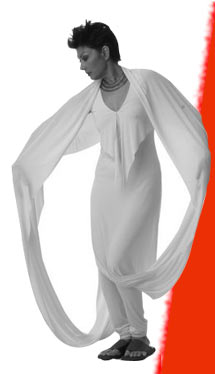It is exactly twenty five years since the first ever India Festival was launched in Paris, with great excitement and high profile guests including President Mitterand and the enthusiastic and voluble Minister of Culture Jack Lang. Peter Brook’s Mahabharata was the Piece de Resistance and went on to make theater history. As part of the production, I watched with amusement as Indian officials, who had nothing to do with the play or the funding of it, appropriated it as part of the Festival.
The opening, a few days ago, of Namaste France was much more low key. Twenty five years have shown Parisiennes many festivals. Many regularly travel to India and the world and most are blasé about seeing something beyond their ken. It is in this context that our government’s choice of the lead exhibition pleased and excited me.
The new Musee Quay Branly sits within walking distance from the Eiffel Tower, an inspired piece of architecture on the river, unobtrusive yet drawing quit attention. As I entered my eye was caught by the huge clay horses of Ayanar standing regally with a couple of huge clay bhootas from Karnataka, in the gardens. (Does anyone remember a similar horse standing at Usmanpura char-rasta, making it a distinctive city landmark?)
The exhibition is called The Other Masters, and for the first time brings the magnificent and varied art of the Adivasi to centre stage. In a wonderfully curated show Jyotindra Jain brings together art from traditions as diverse as that from Nicobar and the Warlis, Chattisgarh and Karnataka, Gujarat and Nagaland.
A cheesy Bollywood clip of Sunil Dutt and Asha Parekh (playing a tribal belle with blue eye shadow and pointy breasts – a true adivasi from Mehbood studios) leads the way to a series of early photographs of adivasis, mostly from the British times. But it is when one enters the main gallery that one catches ones breath. The gallery is filled with natural light, with the gardens with the earlier mentioned sculptures framing the inside space. Huge wooden animals, crocodiles, big cats and mythological beasts lie, as though in wait for their pray. Bronze masks, twice life size, of strange gods and demons are framed in all white alcoves. Tradition is intermixed with contemporary art from traditional adivasi artists responding to their new worlds. Gond paintings of trains and air planes, and Yama dressed as a policeman, dragging his Gond victim to hell bring out some of the angst and anxiety of the disintegrating adivasi world. A featured Warli artist is shown at work and in his home on a TV screen surround by his paintings. Small detailed sculptures of Ao Naga men, head hunting warriors, mirror our own dance costumes researched and found from the tribe.
This is a different India and while it excites me and my group, some French journalists, Orientalists to the end, dismiss it as not being “high” art. Can traditions that have survived thousands of years and that have this level of sophistication be thus dismissed merely because they were not notated in the classic sense in which, for instance, Chola bronzes have been? Is it not the artist’s right to use the form to mirror today’s world using a language that is theirs? Do our art critics also not practice this ‘racisms” in many ways, dismissing tribal culture as folk culture and their works as craft rather than art?
One irony that hit me in the face – while we celebrate adivasi art in Paris, we hunt down the makers of the art as Maoists and Naxalites. Ah, India!

